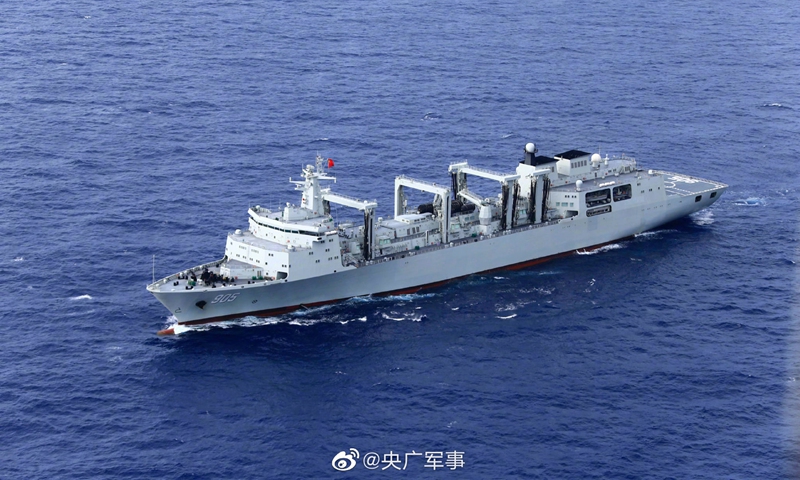
Photo: Weibo
Upon the request from Tonga, the Chinese military sent two naval vessels to the country with China's second batch of disaster-relief supplies in the aftermath of a volcano eruption, sailing off from South China's Guangzhou on Monday, the eve of the Chinese Lunar New Year. Experts believe the navy is fully prepared for all scenarios and the task demonstrated China's commitment and capacity.
The goodwill mission was announced by Senior Colonel Tan Kefei, the Ministry of National Defense spokesperson on Monday. The Type 071 amphibious dock landing ship
Wuzhishan and the Type 901 comprehensive supply ship
Chaganhu undertook the mission. Media reports said that the vessels are multi-capacity equipped and can meet the needs of this task.
The relief supplies estimated to weigh more than 1,400 tons, include mobile homes, tractors, electric generators, medical equipment, food, and other essential goods. All items were disinfected before loading.
A massive underwater volcano erupted in Tonga on January 15, triggering a deadly tsunami, covering the archipelago in ash, knocking out local communication infrastructure. Resultant tsunamis also affected other countries around the Pacific Ocean, including Japan, the US and Peru.
The first batch of emergency supplies delivered by China on January 28 also arrived in Nuku'alofa, the capital of Tonga. These supplies, ferried by two large Chinese People's Liberation Army (PLA) Air Force Y-20 transport aircraft, include drinking water, food, personal protective equipment, tents, foldable beds, water purifiers, and walkie talkies.
According to reports, the
Wuzhishan is of China's most advanced amphibious dock landing ship type, only second to the Type 075 amphibious assault ship, while the
Chaganhu is of China's largest type of supply ship with an estimated displacement of over 40,000 tons. Compared with air supplies delivery, maritime delivery formation can transport more materials.
In addition, the
Wuzhishan may provide medical services for Tongans if necessary.
Song Zhongping, a Chinese military expert and TV commentator, told the Global Times the two ships were chosen because the main task is to send the relief supplies to Tonga. The
Wuzhishan has an estimated displacement of more than 20,000 tons, boasting a large capacity of supply loading..
Large amphibious ships can not only load and unload at ports, but also land on beaches with little infrastructure, said Song, noting that the
Wuzhishan can also carry helicopters, air-cushioned landing craft, charge boats and others, which can be used for rescue missions during emergency.
Another reason, according to Song, is that the mission to Tonga is full of uncertainties, as there may be still intermittent volcanic eruptions and earthquakes in Tonga. The
Wuzhishan has a medical rescue cabin, battlefield rescue facility which is itself a rescue platform, and when the need arises, the ship can also undertake the task of evacuating Chinese nationals.
The
Wuzhishan has also accumulated abundant experience in fighting disasters during its previous escorting missions to the Gulf of Aden, said Song.
The military expert said that the main challenge for the two ships this time is whether there will be another underwater volcano eruption, or a tsunami caused by a seaquake. Thus, the PLA Navy must be prepared for all scenarios to ensure the safety of personnel and equipment.
Conversely, the Chinese military, which has limited experience in dealing with volcanic eruptions, can use this opportunity to gain relevant experience, he said.
On the eve of the Chinese New Year, the PLA's gesture of the mission to Tonga demonstrated China's responsibility and capacity, said Song. "When other countries are fighting disaster, we must offer our help to face the disaster together, which is the best explanation of a community with a shared future for mankind."




